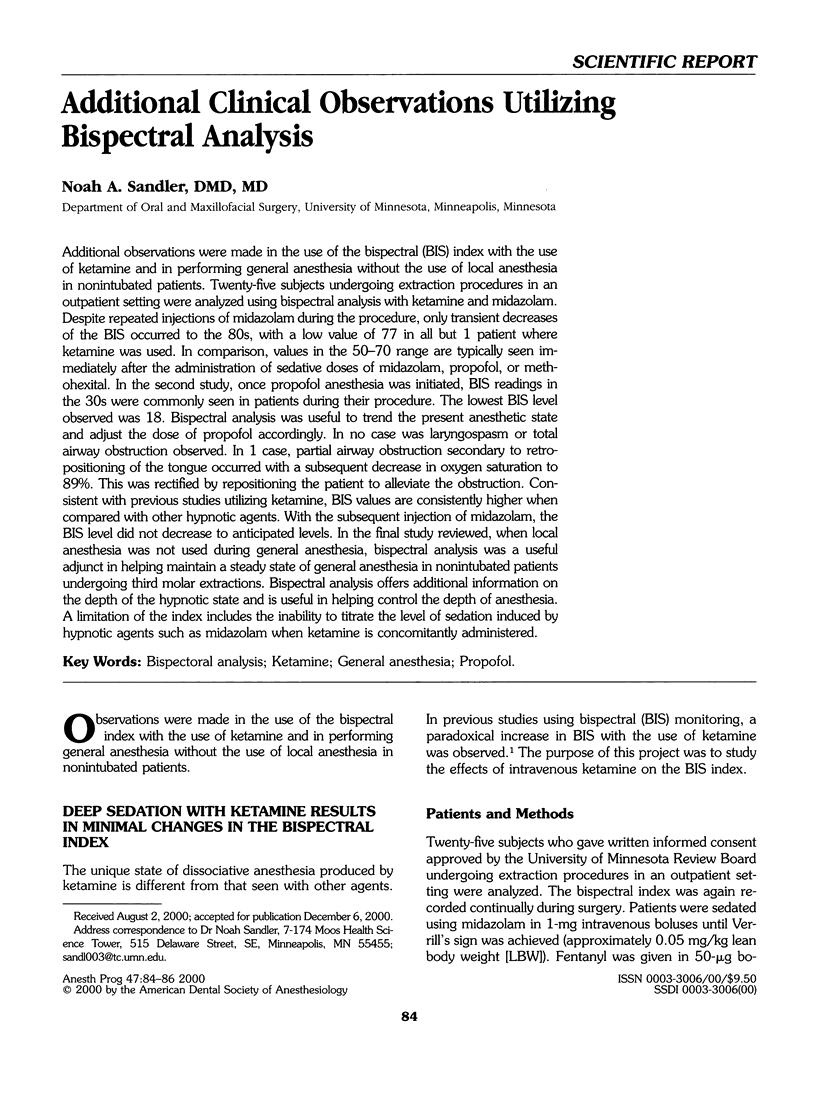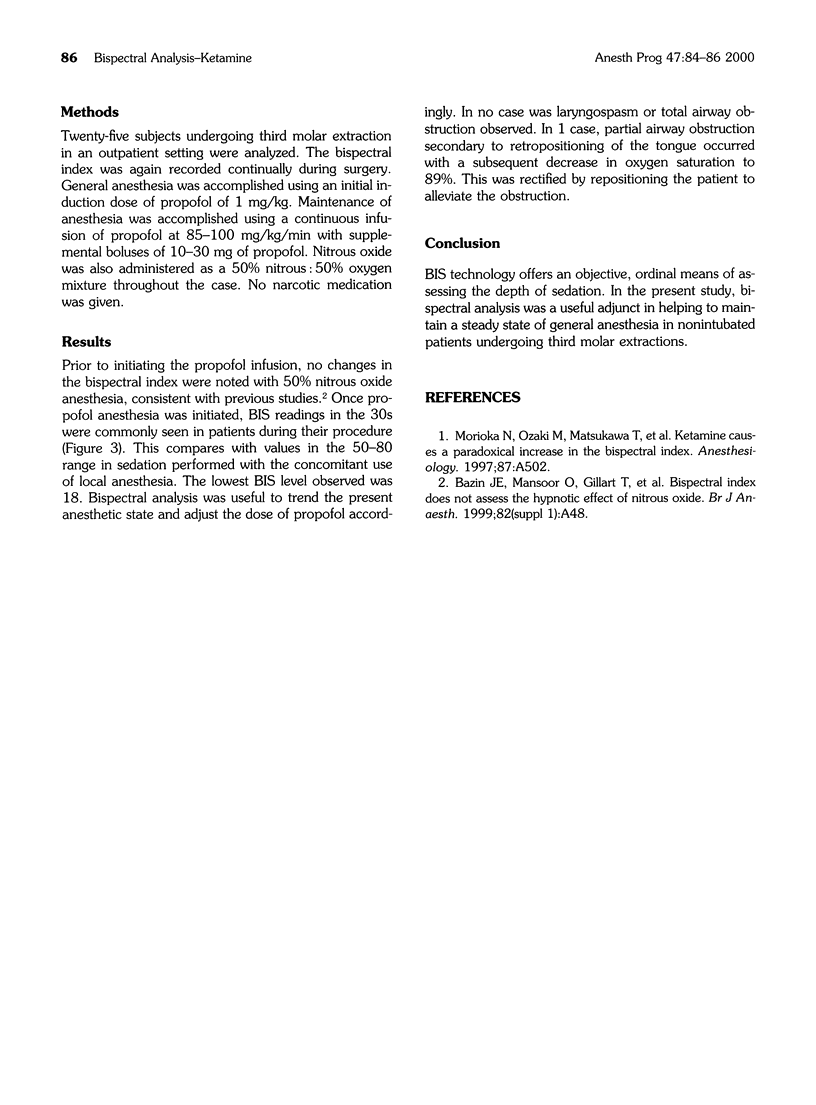Abstract
Additional observations were made in the use of the bispectral (BIS) index with the use of ketamine and in performing general anesthesia without the use of local anesthesia in nonintubated patients. Twenty-five subjects undergoing extraction procedures in an outpatient setting were analyzed using bispectral analysis with ketamine and midazolam. Despite repeated injections of midazolam during the procedure, only transient decreases of the BIS occurred to the 80s, with a low value of 77 in all but 1 patient where ketamine was used. In comparison, values in the 50-70 range are typically seen immediately after the administration of sedative doses of midazolam, propofol, or methohexital. In the second study, once propofol anesthesia was initiated, BIS readings in the 30s were commonly seen in patients during their procedure. The lowest BIS level observed was 18. Bispectral analysis was useful to trend the present anesthetic state and adjust the dose of propofol accordingly. In no case was laryngospasm or total airway obstruction observed. In 1 case, partial airway obstruction secondary to retro-positioning of the tongue occurred with a subsequent decrease in oxygen saturation to 89%. This was rectified by repositioning the patient to alleviate the obstruction. Consistent with previous studies utilizing ketamine, BIS values are consistently higher when compared with other hypnotic agents. With the subsequent injection of midazolam, the BIS level did not decrease to anticipated levels. In the final study reviewed, when local anesthesia was not used during general anesthesia, bispectral analysis was a useful adjunct in helping maintain a steady state of general anesthesia in nonintubated patients undergoing third molar extractions. Bispectral analysis offers additional information on the depth of the hypnotic state and is useful in helping control the depth of anesthesia. A limitation of the index includes the inability to titrate the level of sedation induced by hypnotic agents such as midazolam when ketamine is concomitantly administered.
Full text
PDF




